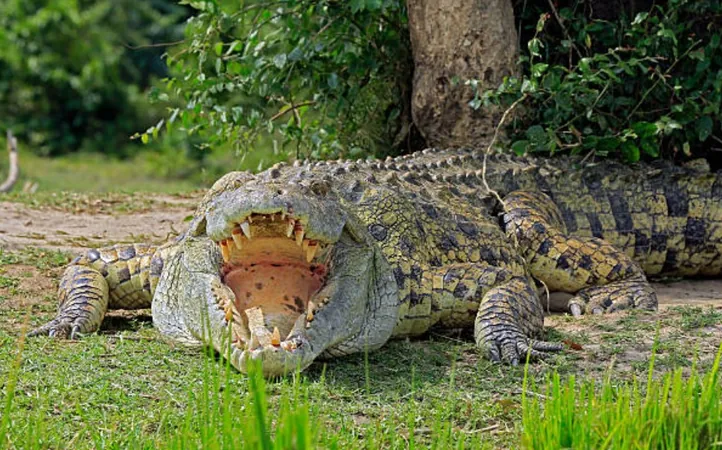
New Species Alert: Cave-Dwelling Dwarf Crocodiles in Gabon Show Unbelievable Adaptations!
2025-01-06
Author: Liam
Remarkable Adaptations Unveiled
These incredible cave crocodiles (Osteolaemus tetraspis) are not your average reptiles. Adapted to thrive in a pitch-black, bat-rich environment, they have developed extraordinary survival skills. Unlike their forest-dwelling relatives, these crocodiles hunt primarily on bats and cave crickets, while swimming in pools of nutrient-rich bat guano. Their orange hue is the result of chemical bleaching due to their constant exposure to guano, which is abundant in urea and other nutrients.
Since their discovery in 2008 and subsequent study starting in 2010, researchers have observed behaviors and traits that are completely foreign to surface crocodiles. For example, these cave-dwelling creatures lay their eggs near cave entrances, and once the juveniles hatch, they venture deep into the cavernous world, rarely to resurface as adults.
Genetic Secrets Revealed
Genetic analysis of the Abanda cave crocodiles has revealed something astonishing. Researchers have identified a unique haplotype—specific genetic traits—that are exclusive to this isolated population. This isolation, coupled with limited genetic exchange with their surface-dwelling counterparts, has initiated a divergence that is paving the way for a new species.
Matthew Shirley, a conservation biologist, notes that these genetic mutations may have commenced thousands of years ago. Over generations, these reptiles have adapted both physically and behaviorally to survive in the challenging environment of the caves.
Survival in a Hostile Habitat
Life in the caves is far from easy. The environment is dark, humid, and filled with thick layers of bat guano. Yet, despite these challenges, the dwarf crocodiles thrive thanks to a bounty of prey and the absence of natural predators. Their unique diet starkly contrasts with that of their surface-dwelling relatives, who primarily consume fish and crustaceans.
Nevertheless, their isolated habitat raises important concerns regarding genetic diversity. Experts warn that inbreeding can increase susceptibility to diseases and genetic defects. Fortunately, researchers believe that the occasional arrivals from outside populations help maintain a healthy genetic pool.
A Window into Evolutionary Adaptation
The study of these cave-dwelling crocodiles provides invaluable insights into how species adapt to extreme environments. Fascinatingly, while other crocodiles depend on sunlight for energy, these cave residents have evolved to survive for extended periods without it. This remarkable adaptation exemplifies the resilience and ingenuity of life on Earth.
As scientists continue their exploration of this unique population, the saga of the Abanda cave crocodiles serves as a stunning testament to the adaptability of life under extreme conditions. While the question of whether they will officially become a new species remains open, their very existence is challenging our understanding of crocodile evolution and the incredible pathways of adaptation in nature.
Stay tuned, as this captivating discovery could change the way we view evolutionary processes forever!









 Brasil (PT)
Brasil (PT)
 Canada (EN)
Canada (EN)
 Chile (ES)
Chile (ES)
 Česko (CS)
Česko (CS)
 대한민국 (KO)
대한민국 (KO)
 España (ES)
España (ES)
 France (FR)
France (FR)
 Hong Kong (EN)
Hong Kong (EN)
 Italia (IT)
Italia (IT)
 日本 (JA)
日本 (JA)
 Magyarország (HU)
Magyarország (HU)
 Norge (NO)
Norge (NO)
 Polska (PL)
Polska (PL)
 Schweiz (DE)
Schweiz (DE)
 Singapore (EN)
Singapore (EN)
 Sverige (SV)
Sverige (SV)
 Suomi (FI)
Suomi (FI)
 Türkiye (TR)
Türkiye (TR)
 الإمارات العربية المتحدة (AR)
الإمارات العربية المتحدة (AR)